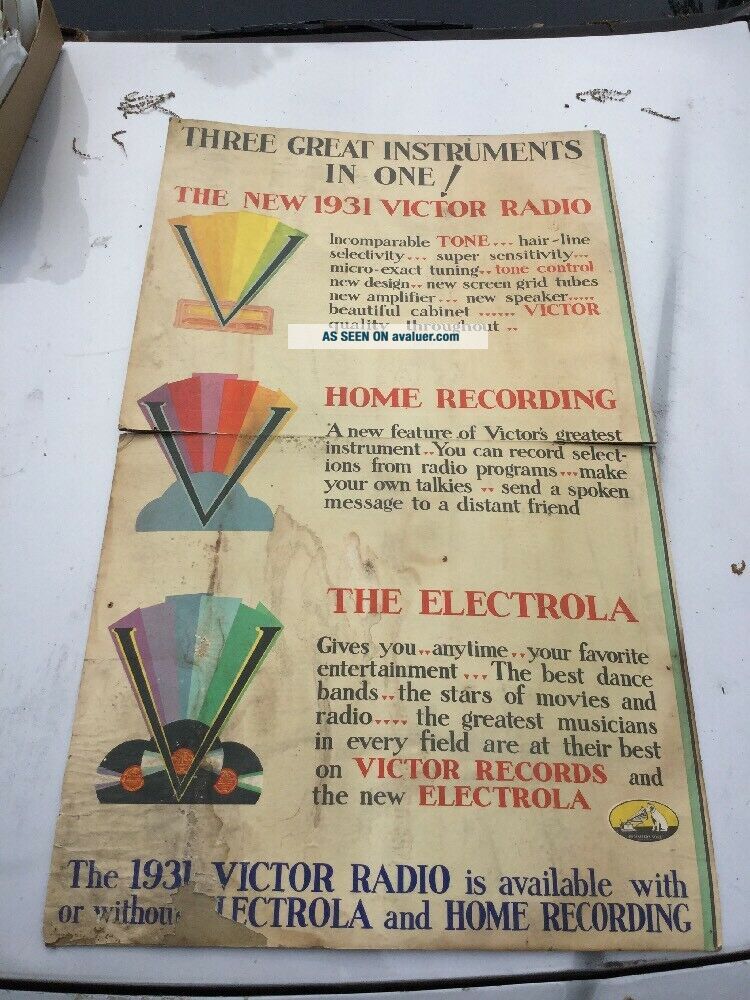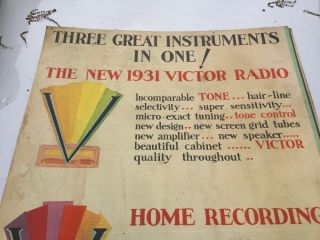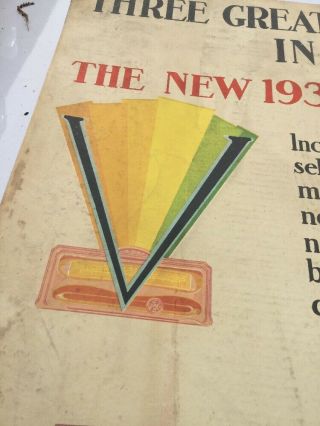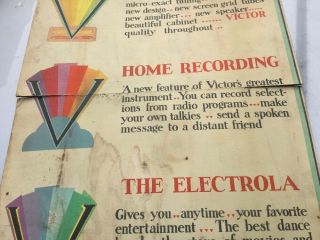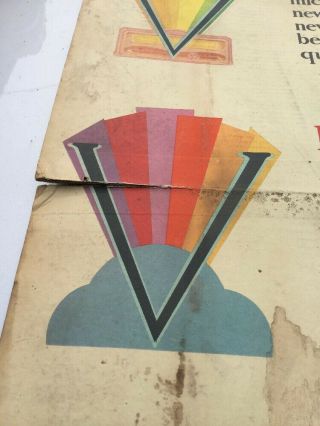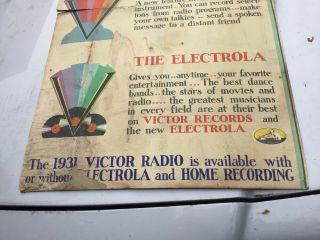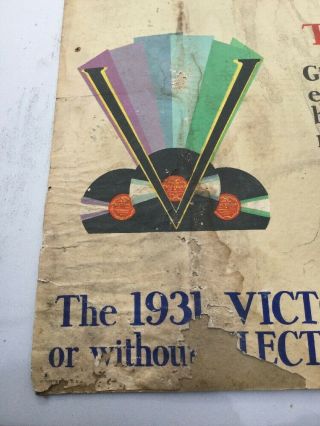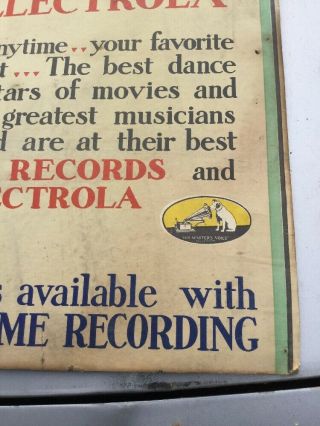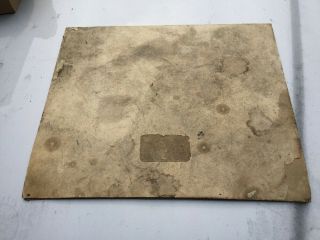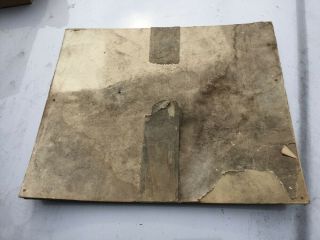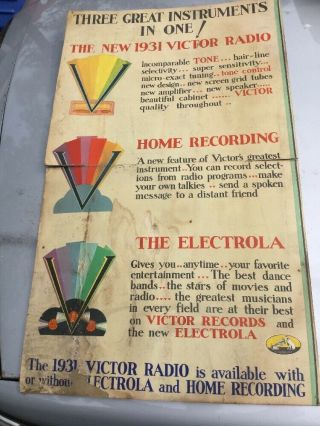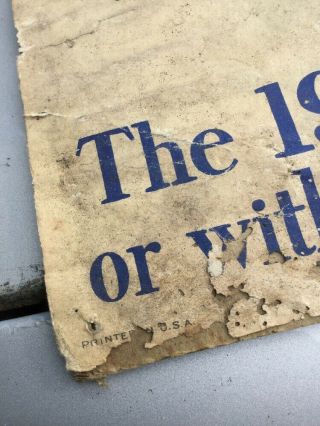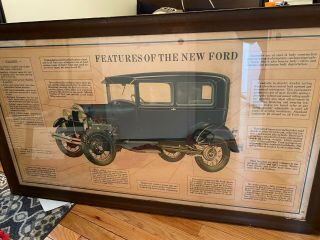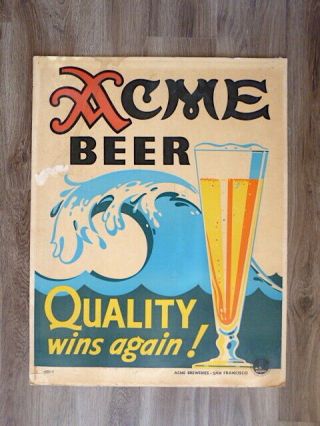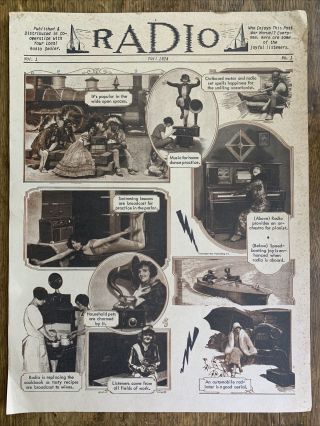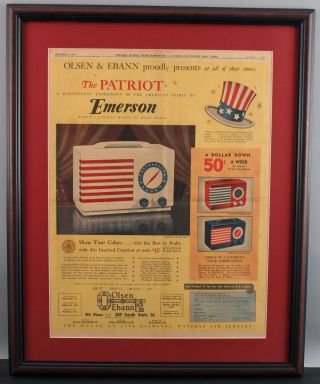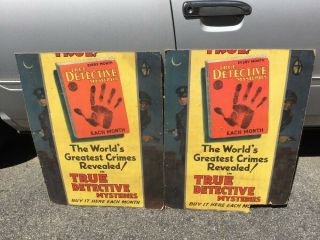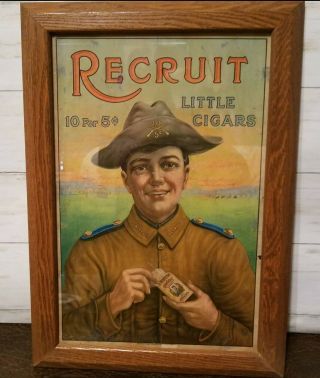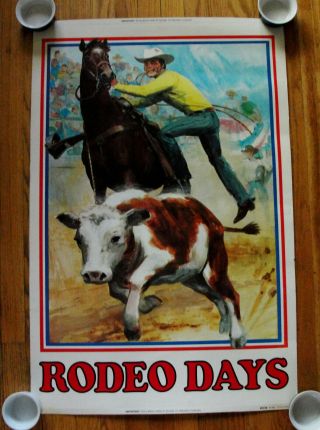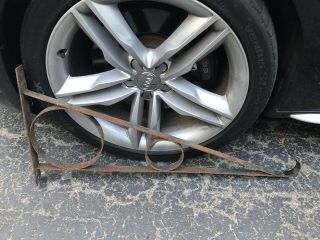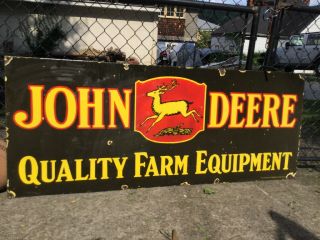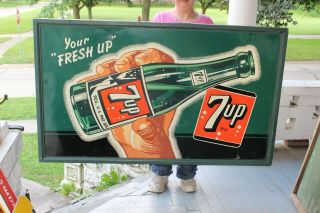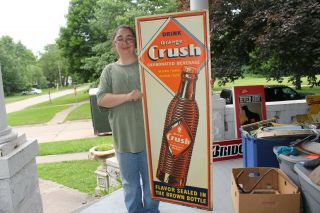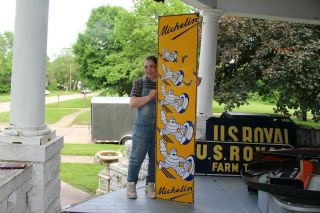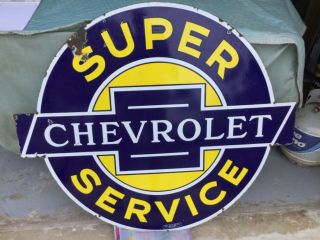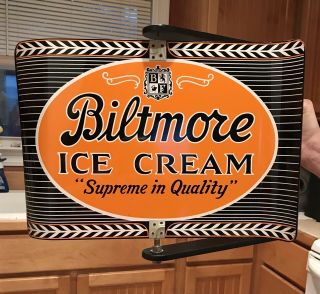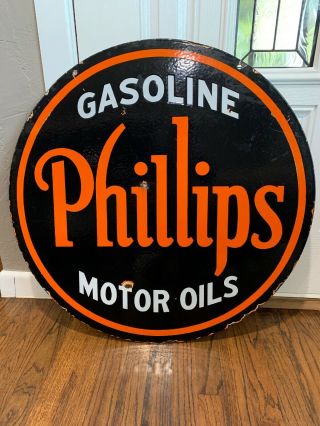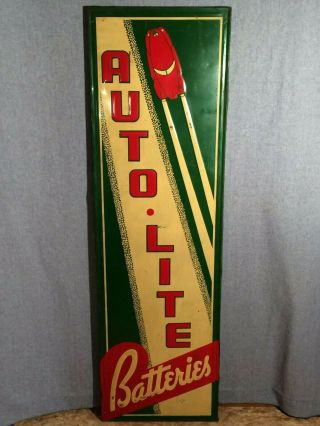Antique 1931 Large Lithograph Advertising Poster Sign RCA Victor Radio Electrola
Item History & Price
| Reference Number: Avaluer:626471 | Type of Advertising: Sign |
History: The advent of radio as a home entertainment medium in the early 1920s presented Victor and the entire record industry with new challenges. Not only was music becoming available over the air free of charge, but a live broadcast made using a high-quality microphone and heard over a high-quality receiver provided clearer, more "natural" sound than a contemporary record. In 1925, Victor switched from the acoustical or mechanical method of recording to the new microphone-based electrical system developed by Western Electric. Victor called its version of the improved fidelity recording process "Orthophonic", and sold a new line of record players, called "Orthophonic Victrolas", scientifically designed to play these improved records. Victor's first electrical recordings were made and issued in the spring of 1925. However, in order to create sufficient catalogs of them to satisfy anticipated demand, and to allow dealers time to liquidate their stocks of acoustical recordings, Victor and its rival, Columbia, agreed to keep secret from the public, until near the end of 1925, the fact that they were making the new electrical recordings which offered a vast improvement over the ones currently available. Then, with a large advertising campaign, Victor openly announced the new technology and introduced its Orthophonic Victrolas on "Victor Day", November 2, 1925.
Victor's first commercial electrical recording was made at the company's Camden, New Jersey studios on February 26, 1925. A group of eight popular Victor artists, Billy Murray, Frank Banta, Henry Burr, Albert Campbell, Frank Croxton, John Meyer, Monroe Silver, and Rudy Wiedoeft gathered to record "A Miniature Concert". Several takes were recorded by the old acoustical process, then additional takes were recorded electrically for test purposes. The electrical recordings turned out well, and Victor issued the results that summer as the two sides of 12-inch 78 rpm record Victor 35753.Victor quickly recorded the Philadelphia Orchestra conducted by Stokowski in a series at its Camden, New Jersey studios and then in Philadelphia's Academy of Music. Among Stokowski's first electrical recordings were performances of Danse Macabre by Camille Saint-Saëns and Marche Slave by Pyotr Ilyich Tchaikovsky. Frederick Stock and the Chicago Symphony Orchestra made a series of recordings for Victor, beginning in 1925, first in Victor's Chicago studios and then in Orchestra Hall. The San Francisco Symphony Orchestra conducted by Alfred Hertz made a few acoustical recordings early in 1925, then switched to electrical recordings in Oakland and San Francisco, California, continuing until 1928. Within a few years, Serge Koussevitzky began a long series of recordings with the Boston Symphony Orchestra in Boston's Symphony Hall. Toscanini made his first Victor electrical recordings with the New York Philharmonic Orchestra in 1929.The origins of country music as we know it today can be traced to two seminal influences and a remarkable coincidence. Jimmie Rodgers and the Carter Family are considered the founders of country music and their songs were first captured at an historic recording session in Bristol, Tennessee (also known as the Bristol Sessions) on August 1, 1927, where Ralph Peer was the talent scout and recording engineer for Victor.In 1926, Johnson sold his controlling (but not holding) interest in the Victor Company to the banking firms of JW Seligman and Spyer & Co, who in turn sold Victor to the Radio Corporation of America in 1929. It then became known briefly as the Radio-Victor Division of the Radio Corporation of America, then the RCA Manufacturing Company, the RCA Victor Division and in 1968, RCA Records. Most record labels continued to bear only the "Victor" name until 1946, when the labels changed to "RCA Victor" and eventually, to simply "RCA" in late 1968, "Victor" becoming the label designation for RCA's popular music releases.
In November, 1925, Victor introduced the "Orthophonic" Victrola, which utilized the latest sound reproducing technology offering far superior reproduction. The old style Victrolas sounded anemic compared to these products. Dramatic improvements were made in the design of the horns and the soundboxes, in part based on signal transmission theory developed during World War I. This was achieved without the use of electronics, but rather though sophisticated acoustic designs. The tinny Victrola sound was now replaced with a rich tone that was superior to all but the best radios. In addition, phonograph records were for the first time being recorded electrically, which also improved the sound quality. Selling for as little as $50.00 (and for more than $1000.00), these machines were an immediate success, and quickly brought profitability back to Victor.The rapid expansion of the radio market caused a quick decline in the price of electron tubes and components, and by the late 1920's, the combination electronic radio-phonograph was becoming quite popular. These machines could now use the radio's amplifier for reproducing records, and the need for the horn was replaced by the small paper-cone speaker. Fidelity was also much improved. Some models even had sophisticated record changers, which would allow a complete symphony to be played without having to stop and manually change records (picture at right). Victor entered into an agreement with RCA for the use of RCA's electronics in Victor's products, and produced a number of radio-phono combination sets which were quite successful. By the late 20's, Victor's founder, Eldridge Johnson, now a millionaire, was growing weary of the business, and decided to retire. In 1929, RCA purchased The Victor Talking Machine Company, and the new company was called "RCA Victor". By this time, the popularity of the acoustic phonograph was quickly diminishing in favor of the louder and more flexible electronic combination systems, and only cheap portables and children's phonographs continued to utilize acoustic reproduction. In October 1929, the onset of The Depression literally killed the sales of all non-essential commodities, and not until the late 1930's did RCA Victor again experience significant sales of phonographs.



